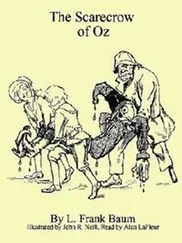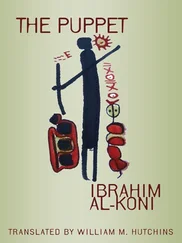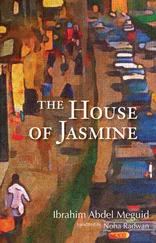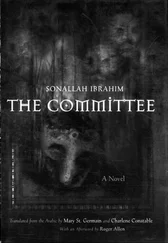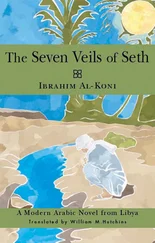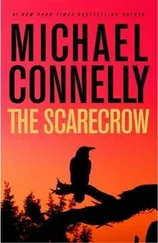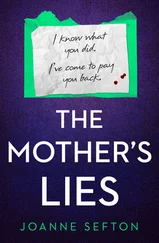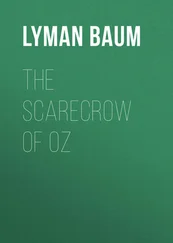The fourth specter shot off, fleeing toward the right for a long distance. Then he returned only to flee to the left for a longer distance. On both laps, darkness swallowed him. All the same, he returned from the Spirit World with a talisman: “You, master, from today forward are the master of this oasis. May all the nooks hear the news and may the Spirit World bear witness that we have conveyed the prophecy.”
Stillness descended on the area, and the mysterious being returned from his exile to govern the oasis. Then the creatures restrained their tongues so they could eavesdrop on this creature’s whispers in a pantomime of lost time. The detestable guffaws, the lethal laughter, and the suppressed cackling that people of the oasis had often heard when they passed the scarecrow in the fields and that they glossed as the voice of the Unknown — this mysterious, mischievous rattle — immediately burst from the chest of the twilight specter. Then the stillness was at once shaken, and the place became chaotic. The mysterious being, whom people had known but never seen, fled and settled in the farthest corner of the austere tract spread beneath the moon.
3
In the oasis, griots and gossips have related the story of the scarecrow. They said that an alien migrant sorcerer, when he came from the Unknown and settled in the oasis, disguised himself in rough haircloth — as members of this coterie always like to do. Then he claimed he was a metalsmith whose specialties were using metal tools to carve poles, saw planks, and turn trees into saddles. Not long after the new immigrant rented a workshop in the metalsmiths’ market, residents became convinced that the man’s boast was not only accurate but that he was even being modest, because his saddles differed from any they knew in markets in the oases or had purchased from blacksmith shops. His were unique for their captivating carving. People had also never seen any as skillfully crafted. Thus his renown spread in a short time, and the oasis’s nobles — who had never lost their yearning for the traditions of mounted warriors — and other real cavaliers, who were leaders of tribes scattered through neighboring deserts, headed to his workshop. Traders from passing caravans also flocked to his door to buy all the saddles he had in stock. Then the merchants carried them to the deserts of the South and the cities of the North. So the cunning artisan offered evidence to slothful tribesmen and slugabeds of the oasis that anyone who perfected a task while alive would inevitably be rewarded by the Spirit World, which would convey his fame to the farthest corners.
The secret behind the smith’s renown among far-flung peoples was his expertise, but it was a different story inside the oasis walls. Clever men have long realized that there is no honor for a soothsayer or diviner in a land where people do not recognize prophecy and that a product does not succeed in a land where local people view it dismissively or disdainfully. So if merchants and mounted warriors from neighboring tribes had not purchased the clever artisan’s saddles, the man would not have enjoyed any share of the respect he deserved. Indeed the market for his products would have remained tepid for a long time in a land where people hid their past and piled their old saddles in the corners of their houses, allowing them to be destroyed by moths and grit. They had also traded in their purebred Mahri camels (on which tribes prided themselves, celebrating them in poems) for matted, morose, behemoth camels with bodies like an elephant — beasts fit only for transporting heavy loads.
But communities also knew that anyone who was loved by the Spirit World and who harbored its secret inside him would inevitably succeed in a pursuit — even if he lost in some other one he had perfected for the public good when people did not acknowledge his skill.
4
A captivating widow, whose beloved husband died on a business trip to the forestlands, was said to have inspired the sorcerer to construct that abominable scarecrow. She had gone into mourning, secluded herself, and rejected suitors and prospective husbands. She lived alone in the oasis, occupying her time with crooning plaintive ballads and supervising the herd of livestock she had inherited from her deceased lord.
This herd was devastated by a calamity that led her to the metalsmiths’ market, where she fell under the influence of the sorcerer.
It was said that she claimed at first she thought some epidemic had infected her livestock. Wise herdsmen, however, informed her that the calamity was caused not by some mysterious epidemic but by the ravages of the vermin that creep across the face of the wasteland. She consulted a clairvoyant, who confirmed that the Spirit World was not responsible for this bloodshed. He spoke cryptically about evil intentions and concluded that the crime demonstrated the existence of a culprit. So she proceeded to set up scary figures around her livestock’s corral to frighten away wild beasts. These resembled the effigies that farmers set up in their fields to scare away birds but did not save her herd from destruction. Every morning she would discover the disappearance of one or two head of livestock overnight. Outside the palm-stalk fence she would find the remaining vestiges of this nocturnal bloodbath. There were pools of blood that the dirt had absorbed till it hardened and coagulated and skeletons with their bones stripped clean of flesh with alarming efficiency — as if it had been trimmed off with a knife. Intestines were strewn about — split open and begrimed with dirt and pebbles — as digestive juices spilled from them, mixed with cud. The skins had been flayed from the body and cut into many pieces as if the perpetrator had intentionally destroyed them to ward off suspicion and to destroy the traces of his heinous deed.
At first suspicions centered on wild beasts. Many people told her that the gully the spring’s waters had created at the base of the eastern section of the city wall frequently attracted reptiles, vermin, and wild beasts from the wasteland and that it was certainly not out of the question that dieb jackals had slipped in from there too. When she asked why jackals would prefer her animals to the herds of other people, they ignored this question and claimed this aspect of the mystery pertained exclusively to the Spirit World, because creatures like jackals held no grudge against her and did not descend on the oasis to slay one person’s livestock instead of another’s — except to deliver a message. She would need to appease the Spirit World with sacrificial offerings if she wanted to save herself and her flocks from this calamity.
The poor woman hurried to the temple and slaughtered a ewe on the tomb’s threshold, but the ghoul attacked the corral that same night and slew two of the nanny goats that gave the most bountiful amounts of milk. So she despaired. She despaired without knowing that despair is the only amulet capable of conquering every calamity.
She despaired, and her despair led her to the scion of the foreigners. In the oasis they said he practiced saddle making only as a cover for the dread craft that arrogant people typically conceal whenever they migrate from their homelands. This tactician would not have succeeded in his carpentry and in fashioning poles had it not been for his mastery of that other craft — from which tribes were never secure because veils of mystery always encompassed it; its masters practiced deferential rites and demonstrated their apprehension and wariness many times.
On that day, the widow heard a boast of the type that flows from the mouths of migrants.
It is said that, after hearing the beautiful woman’s recital, the clever artisan offered, “With my own hands I will build you a scarecrow unlike any ever seen in the oases. I shall give my lady an idol so sacred that not even flies will dare approach it — if my lady will allow me to carry her to the fields in my arms and carry her back as well.”
Читать дальше

